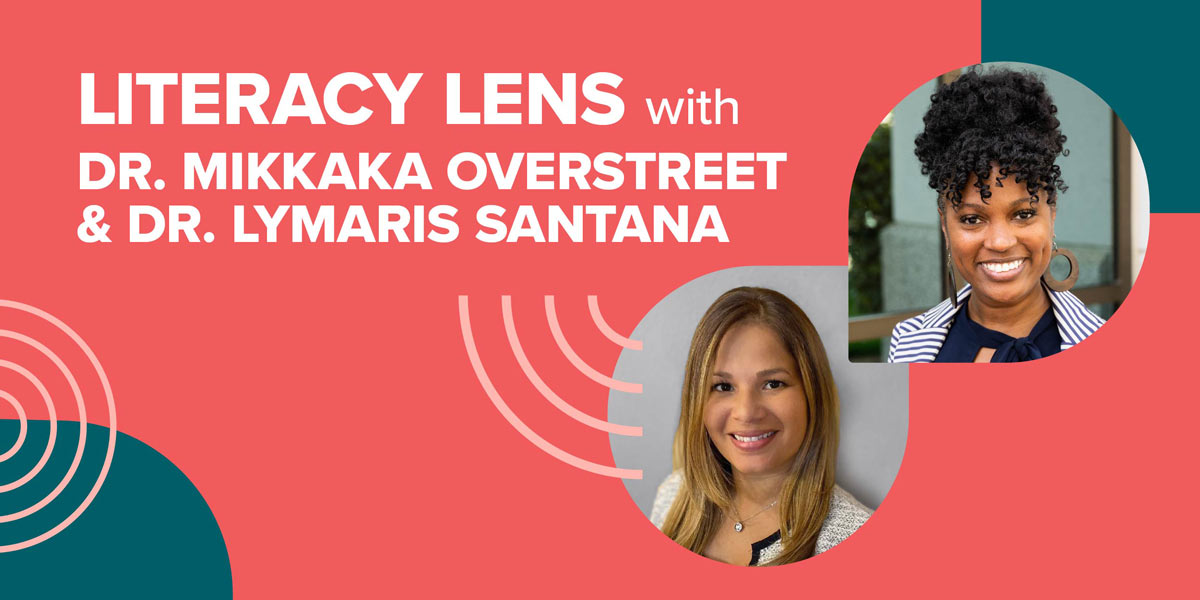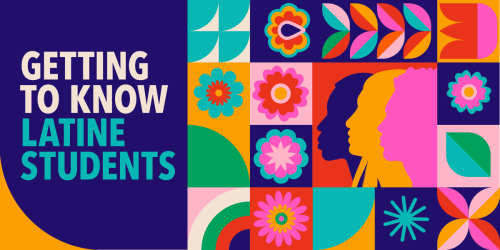Literacy Lens: Effective Literacy Practices for Secondary Students

As states begin to develop evidence-based literacy frameworks and strategic plans, many have yet to consider how they will address the upper grades. In our scan of statewide plans, we found that only a handful of states have comprehensive literacy strategic plans that address the entire K–12 spectrum.
The focus on K–3 and the needs of specific groups, such as multilingual learners and students with disabilities, is understandable. Early literacy is the foundation for student success, and the needs of specific groups have often been overlooked.
No matter how effective evidence-based K–3 literacy practices are over the next several years, however, there will still be older students who did not receive this type of instruction during their early years. Consequently, many middle and high school students will continue to lack the foundational skills necessary to decode and comprehend grade-level texts. As we continue to think about effective statewide literacy implementation, we must consider the literacy needs of these students.
In this blog post, I partnered with my colleague Lymaris Santana, a literacy expert and former secondary teacher, instructional coach, and administrator. We offer insights on how the science of reading applies to secondary students, how to design age-appropriate interventions to address gaps in foundational reading skills, and how disciplinary literacy can improve literacy attainment for all students.
Secondary Students and the Science of Reading
Middle and high school students who cannot independently read grade-level texts face an uphill battle. Without these skills, they will often have difficulty learning content in all subject areas and may try to hide their reading challenges through avoidant or disruptive behaviors. Furthermore, if these students enter postsecondary education, they are often forced to take remedial courses, delaying their progress toward a degree and incurring additional costs.
According to the National Assessment of Educational Progress (NAEP), 64 percent of grade 12 students graduate without achieving proficiency in reading, and those numbers don’t include the approximately 2 million students who drop out of high school every year. Meanwhile, in 2022, 69 percent of grade 8 students scored below proficient in reading on the NAEP.
This problem is not new. Average NAEP reading scores in grade 8—and for Black and Latine students overall—have remained stagnant for 30 years, with no significant change since 1992.
What makes this especially frustrating is that we know what is driving the problem. Typically, secondary students who do not enter grades 6–12 as proficient readers have not received sufficient development in three areas: phonics, morphology, and decoding. And the development of these skills is often further hindered by a lack of exposure to high-interest reading activities and materials.
Providing Age-Appropriate Literacy Interventions
To address this problem, schools must combine explicit instruction in these foundational skills with access to the age-appropriate, multisensory activities and high-interest materials that motivate students. These types of interventions provide critical opportunities for students to work on their literacy skills in a scaffolded but respectful way, while also promoting the meaningful transfer of those skills.
For example, in the intermediate grades (3–5), core instruction in phonics is focused on decoding and gaining meaning from multisyllabic words. For students in grades 6–12 who have still not mastered these skills, it is essential to provide interventions that are appropriate to their age, interests, and maturity level. That means phonics instruction should move as quickly as possible to recognize patterns in multisyllabic words, not just single-syllable words.
Developing a sufficient vocabulary is also critical to secondary students’ ability to comprehend both fiction and non-fiction. Instruction in morphology—the study of word formation—can “help older students who still struggle to read multisyllabic words [and] … support deeper and richer vocabulary development as reading becomes more complex and discipline-specific.” By helping students identify and define prefixes, suffixes, and root words, morphology instruction supports both decoding and comprehension, allowing students to derive the meaning of words they don’t yet know.
Decoding complex, multisyllabic words is not an individual skill, but rather a compilation of many skills. Explicit instruction of morphological analysis strategies can help students decode and determine the meaning of previously unknown multisyllabic words, which are so prevalent in content area text. As this happens, word recognition becomes more automatic, fluency increases, and the student’s ability to comprehend text improves.
Incorporating Disciplinary Literacy
There is abundant research on the benefits of incorporating reading comprehension strategies in content area courses. This is typically called content area literacy. Disciplinary literacy, while related, is different. It is based on the idea that experts and teachers from different disciplines approach and read their respective texts differently, and therefore, students should learn to do so, as well.
In this approach, teachers not only incorporate content-specific reading comprehension strategies, but they also encourage students to reflect on how their understanding changes as they synthesize new information from their reading and apply it to discipline-specific problems. Disciplinary literacy is another way to provide explicit instruction in comprehension skills, while also engaging students in high-interest, age-appropriate reading activities and materials.
Research consistently points to this kind of content area or discipline-specific reading as a critical part of an effective instructional program, while also recommending that it not be done in isolation. The idea is to embed general comprehension strategies into these courses, while allowing content area teachers to reinforce the skills and strategies that are particularly effective in the subject area they are teaching. These efforts should also be coordinated with language arts and reading teachers, literacy coaches, and other content area teachers. The intention is not to turn content area teachers into reading teachers but to emphasize effective literacy practices specific to their subjects.
Call to Action: Supporting Secondary Literacy
Secondary students need and deserve access to rich literacy instruction. The following resources are focused on creating equitable and engaging literacy environments for older students.
Literacy Leads, Content Follows, Students Advance: Advice for Grades 9–12 Literacy Leaders
This is part of a series of guides from the Comprehensive Center Network that is specifically designed for principals, reading coaches, literacy specialists, department heads, and others who lead and are responsible for literacy efforts in their schools. Includes links to evidence-based resources.
Evidence-Based Literacy Implementation
For literacy programs to be effective, schools need strong leaders who understand the science of reading, prioritize collaboration and equity, and can establish a shared community vision for the work. This webpage introduces Education Northwest’s Framework for Literacy Leadership Development.
Intensive Intervention Practice Guide: Explicit Morphology Instruction to Improve Overall Literacy Skills in Secondary Students
This practice guide reviews the research based on morphology instruction with a focus on secondary students who have reading and writing difficulties. The guide also offers example activities and links to intervention programs. It comes from the National Center for Leadership in Intensive Intervention, a consortium for special education leaders funded by the U.S. Department of Education’s Office of Special Education Programs.
Providing Reading Interventions for Students in Grades 4–9
This practice guide from the U.S. Department of Education’s Institute of Education Sciences offers four evidence-based recommendations for students who have not mastered foundational literacy skills by the end of grade 3. The guide specifically discusses the need to build students’ decoding skills so they can read complex multisyllabic words and the need to build word knowledge so they can make sense of texts with more advanced academic language. The authors also provide activities for segmenting words into prefixes, suffixes, and bases and include a list of frequently occurring prefixes and suffixes in academic language.
Using Morphological Strategies to Help Adolescents Decode, Spell, and Comprehend Big Words in Science
In this article from Communication Disorders Quarterly, researchers Jennifer Zoski, Kristin Nellenbach, and Karen Erickson focus on using morphology instruction in middle and high school science classes. The paper explains how to identify which morphemes to teach and how to provide this instruction. The authors also provide a list of common science-related prefixes and suffixes.
What Should Morphology Instruction Look Like?
This entry from reading researcher Timothy Shanahan’s blog, Shanahan on Literacy, includes recommendations on morphology instruction from Peter Bowers, the founder of the WordWorks Literacy Centre in Ontario, Canada. Rather than provide a list of words or activities, Bowers focuses on the key word structure concepts that morphology instruction should teach.



